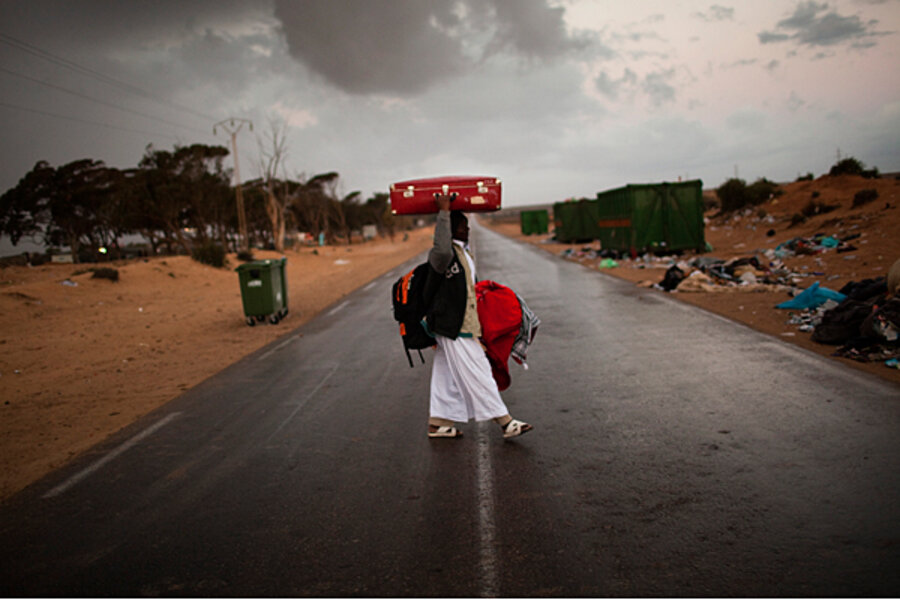My drive from Tunisia to Tripoli, with a Libyan government escort
Loading...
| Tripoli, Libya
During the US-led bombardment against advancing Libyan units this weekend, I secured a government-escorted drive from the Tunisia border to Tripoli – a 100-plus-mile journey through towns where uprisings have been brutally repressed. The drive revealed that the army and militia are in tense control of the entire route.
UN Security Council Resolution 1973 specifically requires Libyan forces to withdraw from several cities, including from Zawiyah just west of Tripoli, which saw heavy fighting, a siege, and finally a brutal crackdown on the opposition throughout late February and into March.
Witnesses in the town, some of them Western journalists who were caught up in the fighting, reported numerous killings that included shooting of demonstrators, children among them.
But on Sunday there was no sign of Libyan military withdrawal from Zawiyah, as soldiers deployed Toyota Landcruisers mounted with heavy machine guns at virtually every street corner along the main bypass road, guns pointed toward the center of town where green bunting and flags were visible.
The front of many buildings were scarred with explosive rounds and bullets of past battles. Handfuls of soldiers appeared to patrol down side streets, or stood about, sometimes near roadside panels where canvas portraits of Qaddafi had been torn from their frames.
Half-hidden under low-slung trees was a row of white trucks, apparently belonging to militiamen, marked by the large blue and yellow painted squares on their front bumper.
At the last of five checkpoints in Zawiyah, a senior officer lorded over the scene from his chair on the middle median, as his troops stopped cars going in both directions. A knife was tucked into his left boot.
That was one of 15 checkpoints along the entire route, where soldiers and militiamen monitor all traffic. Sometimes they wave cars through, but at others African workers were ordered to the side of the road so Libyan police and soldiers could pick through their belongings.
Some of more than 200,000 migrant workers who have crossed out of Libya since mid-February reported being robbed of cash and valuables as they passed to the Tunisia border.
At one checkpoint Sunday, soldiers carried off two large sacks of grain from a long-haul truck and into their post. Even an official vehicle – with three government workers carrying official identity cards, and arguing that they should be let through – was pulled over at one checkpoint.
Tension reigned for a moment, and when we could pull away one official let out a long and exhausted sigh.
Along the road there were also shows of support for Qaddafi. One van full of supporters chanting and playing celebratory music rolled along with people inside pumping their fists and waving green flags.
In one town, we crossed upon a group of 50 or so children in a march, holding green ribbons and Qaddafi posters, escorted by Libyan policemen.





